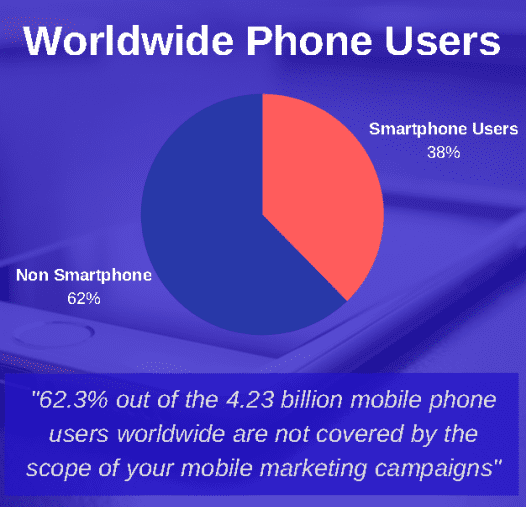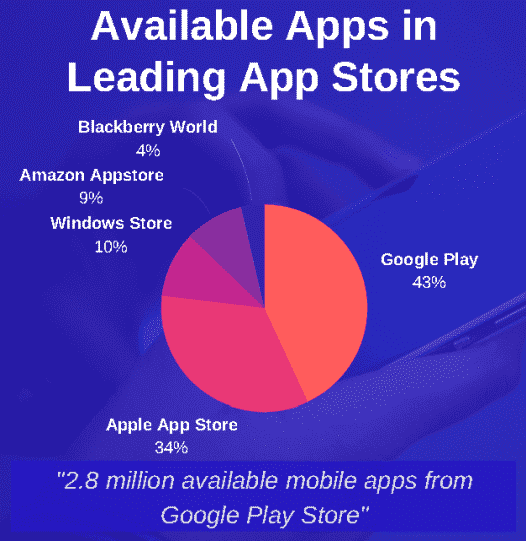You know what’s worse than making a mobile marketing mistake? Not even knowing that you’re doing it wrong in the first place. You don’t want that, and neither do I. That’s why on this guide, we’re going to talk about the 3 mistakes that you might be making, that’s keeping your business from reaching greater heights. If you’ve been using mobile marketing for quite some time now, yet you haven’t really given your promotional campaigns a closer look to make sure that you’re doing them right, then you might want to continue reading. You just might be making some of these mistakes. Let’s hop right in.
- Not utilizing text marketing. Some business owners in the mobile promotional industry are not using text messages marketing. They focus more on other aspects like mobile search engine ads, app development, and app optimization. While these strategies are certainly amazing in their own way, not utilizing text messages might be their downfall if their competitors are using the promotional method — while they are not. Statistics show that only 37.7% all the mobile phone users in the world use smartphones about three years ago. This means that for the year 2014, 62.3% out of the 4.23 billion mobile phone users worldwide are not covered by the scope of your campaigns IF you aren’t using text messages to advertise your business. Of course, this limitation can be reconciled with ease if you’ll start using this promotional strategy.
There’s a lot of good things that can be said about this advertising method. But before I share them, allow me to give you a quick overview of what text marketing is. Text messages are a promotional method that involves sending text messages over to mobile devices to deliver advertisements and offers to users. The text messaging process can be done using mobile phones or can be performed in bulk via online SMS aggregators and distributors. Also, this strategy encompasses a variety of ad types, such as brand and product promotions, sales and discount offers, and commodities that are new in the market. The messaging campaigns can also incorporate product pictures and sales page links with the advent of smartphones. Now that you have a better grasp of what text marketing is and how it works, here are three good reasons why you should consider using it:
It’s cost-effective and affordable.
This advertising strategy doesn’t cost as much as putting up mobile ads. In fact, it’s a surefire way to get your message across your audience with minimal expense, as 95% of people who receive texts open and read them within the first three minutes.
It’s easy to setup and to manage.
This promotional method comes in a variety of platforms that can be used at your disposal to ease the management process. With these programs, you can send your intended text to masses with just a click of a button.
It can be fully automated.
Some platforms can be optimized to have a system’s flow that regularly sends pre-written texts to different masses at preset intervals. These texts can contain links that automatically drop interested clickers into a sales funnel that eventually converts potential prospects into revenue-generating customers. 2. Neglecting cloud security As the marketing trend continually progresses towards the digital field, more and more companies invest their time and money in technologies designed to advance the flow of extending their promotional reach to more individuals participating in the cloud. This expanded range increases the potential digital prospects that companies could have, which may eventually get converted into customers. With the population flocking towards this money-making spectrum, it’s no wonder that more hackers or abusers are starting to pop-up to exploit the system so they can profit from it. Consider this: You’re using a platform that streamlines, optimizes and automates your mobile marketing campaign. You spend money on this program to automatically text random people in a community to check out your product by clicking on a link in the text. Hackers can exploit this by breaching into the program and changing where the inserted hyperlink would direct your audience. When potential prospects click on the link, they would be transferred to a different landing page rather than the one you intended. When that happens, your conversion rate is going to suffer — big time. What’s worse is that you may not even know about the attack on your system. Such is how dangerous it can be for businesses to slack off on their cyber security. You can prevent all this by investing in startup cybersecurity — or at least drastically reduce the chances of your system getting hacked. The ideal protective frameworks should include features such as vulnerability detection, application scanning and testing, insecure permission detection, application firewalls, security assessment, and the like. Using programs such as these will help you have better control over the safety and security of your business systems. You’d also be able to prevent fraudulent transactions, spot data leakages, and identify malware with these security features. 3. Low-balling your marketing budget. I get it: You’ve probably heard about this management mistake. I know it’s no secret in the industry how some business owners aren’t putting ample amount of their resources on their mobile marketing campaigns, yet they expect to generate truckloads of leads out of their promotional efforts. I know this is a common problem, yet I’m still going to include this here since it is still worth mentioning. Some business owners focus so much on app development that they neglect their budget for their campaigns. I hate to be the bearer of bad news, but considering how there are bazillions of mobile apps on the web, your app may need more than just a few ratings to be noticed by potential prospects and customers.
You need to invest in your campaigns if you want to get real results out of them. Also, marketing is an ongoing process and does not end once customers avail of your product. Therefore, a lot of value rides on your promotional campaigns. If you want your customers to stay around, you should consider investing in them via in-app campaigns. What’s next? What are some of the worst mobile marketing mistakes that you’ve made? Please take the time to share your horror stories in the comments section below, and also share the post if you found it helpful. I look forward to reading your comments. Cheers!

